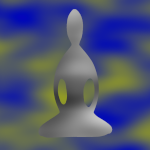Dear Friends,
Yesterday, we reviewed a common occurrence when trying to bring mindfulness to daily activities – we start off with good effort and results, but then the novelty wears off, and we stop being so mindful.
I related this to two short-lived types of joy that Chade-Meng Tan discusses in Joy on Demand: the joy of novelty and the joy of perceived agency. Meng also discusses two sustainable types of joy, so it’s only fair to share those with you too.
Before I do that, I want to tie into something Jeanne talked about on Wednesday evening: wisdom. She shared that there are different levels of wisdom: the wisdom from hearing or reading about something, the wisdom that comes from reviewing and contemplating that which we have heard or read, and then the wisdom that comes from an embodied knowing through our own experience. Jeanne went on to discuss conditions that lead to wisdom, including learning from a teacher (which might be what we read in books or hear in podcasts or experience in a group), sharing and questioning in a community (like the wonderful discussions we have had on the blog and in person), making time and space for contemplation (daily meditation, or giving full attention to a task), and remembering and reviewing what we have learned and letting it seep in to our being.
So what I’ll share from Meng is some of the first kind of wisdom. This might resonate with you, or not. You can find other teachers (e.g. a couple of other books on joy that I can recommend include Awakening Joy by James Baraz and The Book of Joy, which features discussions by the Dalai Lama and Desmond Tutu). You can contemplate and review and question what you read and hear. And in the end, with curiosity and persistence and practice, you’ll find what’s deeply true for you.
Okay, with that in mind…
The first sustainable source of joy, according to Meng, is “the joy of momentary relief from affliction”. Affliction can be big (depression, hatred), or relatively minor (a sense of restlessness, agitation), or anywhere along a spectrum (worry, envy, anger, etc.). Meng says as by “attending gently and intensely to one breath, we find some temporary relief from affliction, and consequently joy arises with that relief.”
The second sustainable source of joy is “the joy of ease”, which he says is available when one is both alert and relaxed. The importance of this source of joy is that “alert and relaxed” is a state we can get to know through meditation and other similar practices. The example he gives for this is when one is sitting in a hot tub (without dozing off). For me, this analogy does not work – I do not have a sense of ease in a hot tub! But I can think of other examples that resonate better for me. (Usually something with dogs!)
In addition to formal meditation practices, you might notice a joy of relief when you’re gently and intently focused on your mindful task, or perhaps you experience a joy of ease because you are in an alert yet relaxed state while doing this task. So that’s something to notice and feel into. Maybe that will bring a little more curiosity to your practice to help you sustain mindfulness when the novelty has worn off. Play with this and see what’s true for you.
With best wishes,
Andrea

Thank you Andrea. What a fascinating topic: sustainable joy. And yesterday’s post was very timely, as someone indicated earlier. I had also found the novelty of being mindful while going up and down the stairs was wearing off but hadn’t named it; I only had a fuzzy awareness that it was waning. Injections of curiosity to help sustain mindfulness when the novelty wears off – Beautiful! I’m also working hard at being alert and relaxed while I am driving. That’s a tougher one for me. Kind of like you in a hot tub. All the best as we practice & play together!